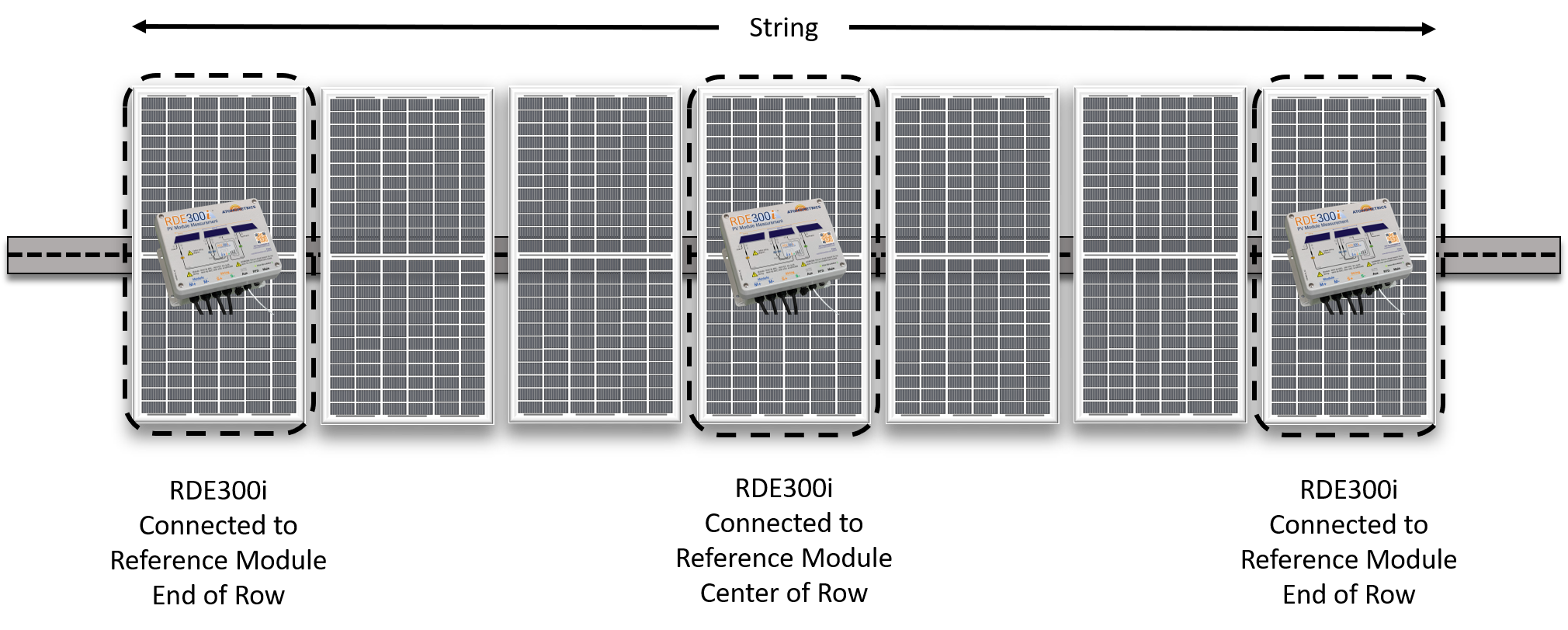Options for Measuring Bifacial Irradiance
In this article we review some key points about measuring bifacial irradiance based on Ref. [1].
Bifacial PV systems present new challenges for measuring irradiance in order to monitor and assess PV performance. While standards are emerging, there is still no uniform guidance on the type, quantity, and placement of irradiance sensors in a monitoring system. Challenges include non-uniformity of rear-side irradiance, the impact of diffuse versus direct radiation, and spectral effects. The choice of sensor types, locations, and quantities will define the level of uncertainty in assessing performance.
The non-uniformity of rear-side irradiance can greatly impact the measurement and modeling of solar panel performance, which can lead to increased uncertainty in performance prediction. Modeling software packages may simplify rear-side non-uniformity by predicting only an average rear-side irradiance value. However, actual irradiance can deviate significantly from the average.
Why is Rear-Side Irradiance Non-Uniform?
Several factors can affect rear-side irradiance, including but not limited to time of day, time of year, environmental conditions, and system design. This variance in bifacial irradiance can cause significant changes in the maximum power output of your PV power plant.
Figure 1 represents an aerial view of a simulated 7 x 20 module string on a single-axis tracker in clear conditions. The heat map represents rear-side irradiance. Simulations for both Jan 1 and June 1 show irradiance at the row-ends to be greater than the row-center. The irradiance profile also changes throughout the day; there is enhanced irradiance at 9 AM on the eastern side towards the morning sun. The changing non-uniformity patterns displayed in Figure 1 complicate the recommended placement of rear-side irradiance sensors, since no single sensor location represents conditions along the entire row.
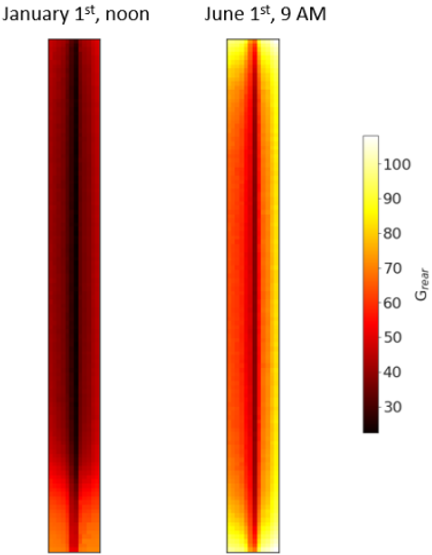
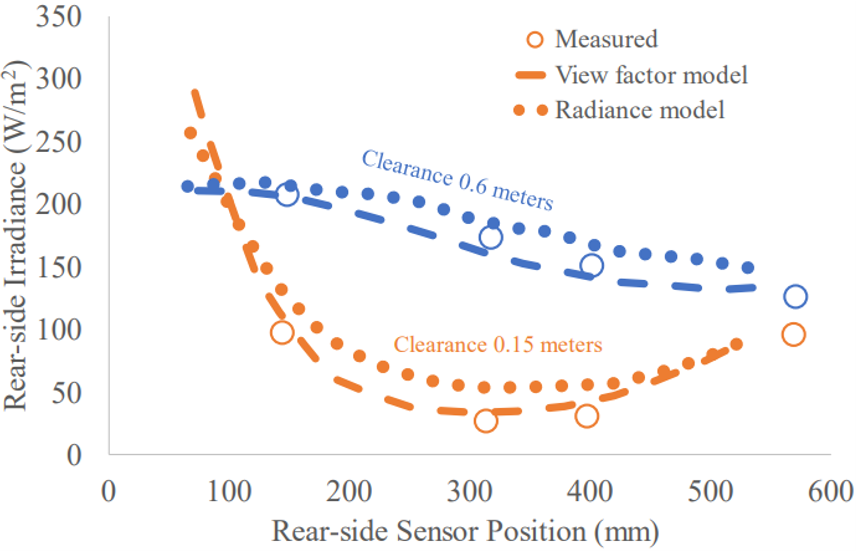
Spatial non-uniformity of rear irradiance is also a function of system design. Figure 2 illustrates the impact of ground clearance height on both the uniformity and magnitude of bifacial irradiance. This chart suggests that higher clearance height leads to greater rear-side irradiance and significantly reduced non-uniformity, but also at a greater cost for racking.
Additionally, variance in diffuse light from the sky complicates the assumption that average rear-side irradiance is proportional to front-side irradiance. Figure 3 shows the proportionality of rear to front plane-of-array (POA) irradiance can vary significantly depending on whether there is high or low diffuse light in the sky. Neglecting bifacial irradiance measurement can result in deviations of up to 20% relative to a model that considers these factors.
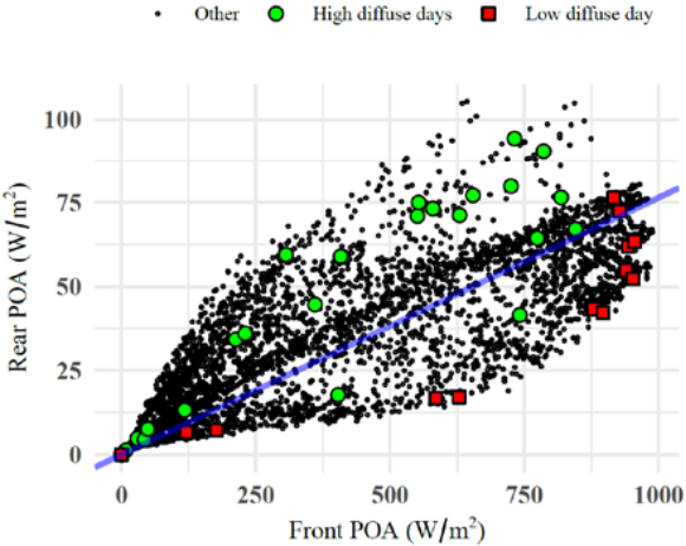
Impacts of Sensor Choice
The choice of irradiance sensors can significantly affect the accuracy of performance predictions in bifacial PV systems.
One important factor is spectral response. This is due to the complex spectral distribution of ground-reflected light, and the mismatch between the spectral response of your sensor and the response of your modules. Figure 4 shows simulations for a set of nine representative ground surfaces. Spectral mismatch relative to a bifacial module was ±9.2% for a thermopile pyranometer versus only ±3.7% for a typical PV reference cell.
Additionally, most sensors are not calibrated for lower irradiance values, and are thus inadequate for bifacial applications. However, Our RC22 reference cell has been dual calibrated for both low and high irradiance values to meet these specific needs.
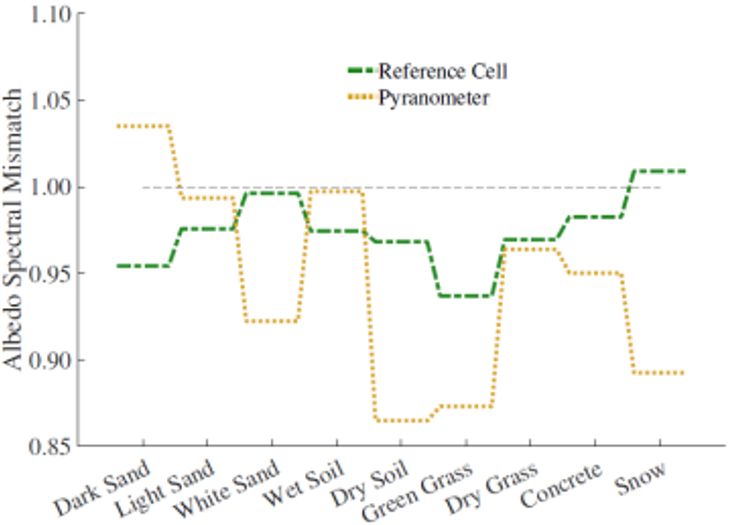
Ref [1]: “Measuring Irradiance for Bifacial PV Systems” by Michael Gostein, Silvana Ovaitt, Chris Deline, Aron Habte, Clifford Hansen, Bill Marion, Jeff Newmiller, Manajit Sengupta, Joshua S Stein, Itai Suez. 2021. IEEE 48th Photovoltaic Specialists Conference (PVSC)
Best Practices for Measuring Bifacial Irradiance with Reference Cells
IEC Standard 61724-1 Ed. 2 requires at least three rear-side measurement points per station, while avoiding shading or reflections. A common strategy to address non-uniformity is to place irradiance sensors, such as our RC22 PV Reference Cell, at ~20-25% from the top and bottom edges, and at the center and the end of rows. Using a combination of front and rear irradiance sensors can help evaluate real-time performance of bifacial systems.
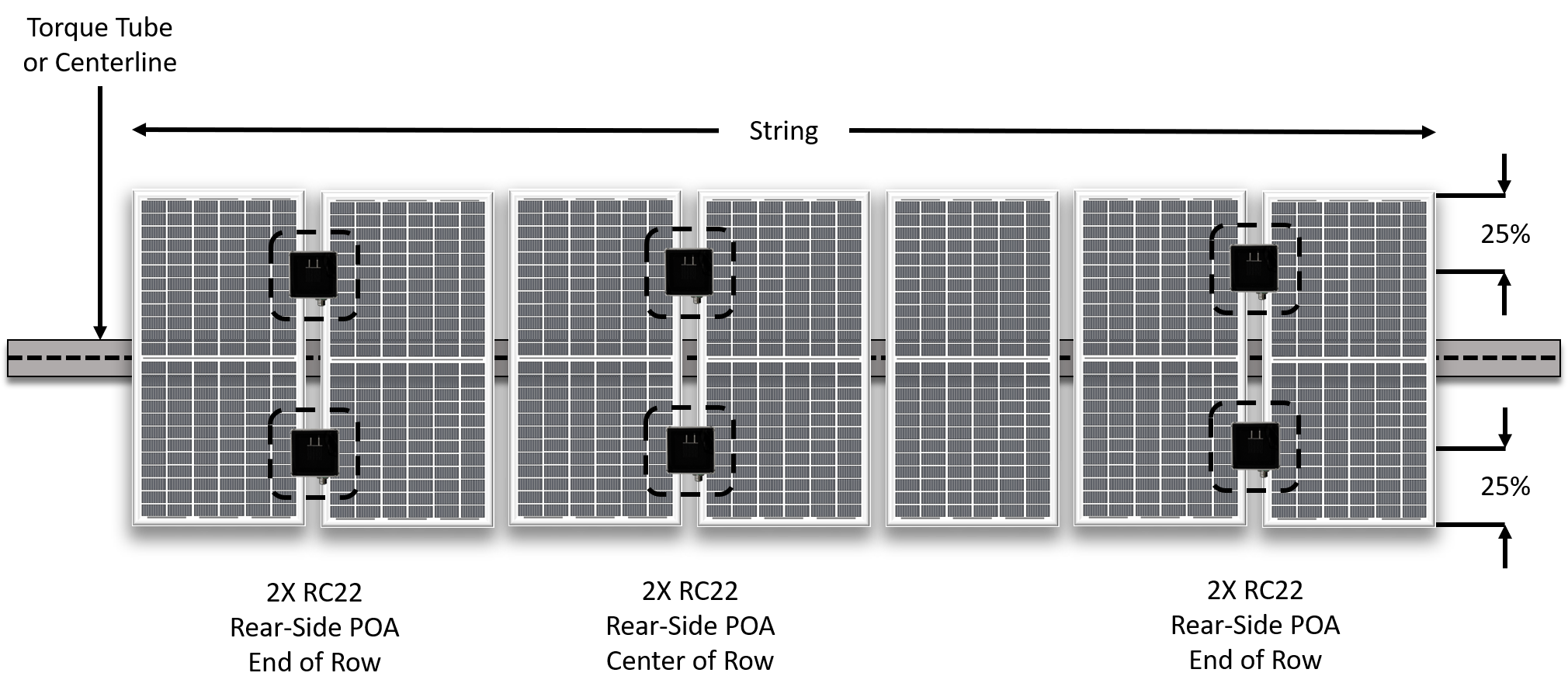
Best Practices for Measuring Bifacial Irradiance with Reference Modules
Using a bifacial reference module is a good way to measure total effective front and rear-side irradiance simultaneously. Measuring the direct output of a bifacial reference module with RDE300i PV Module Measurement System captures rear-side irradiance non-uniformity and has exact matching for spectral effects. Please note that reference modules used to measure irradiance require calibration in a laboratory according to IEC 60904-1-2. Visit our page How to Measure Irradiance with a Reference Module to learn more about the module calibration process.
